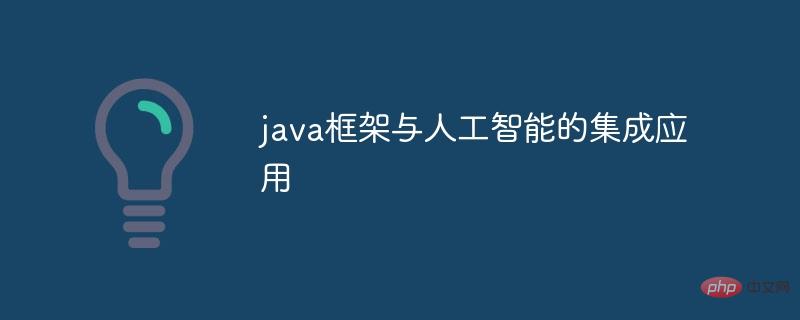
Java frameworks integrated with AI enable applications to take advantage of AI technologies, including automating tasks, delivering personalized experiences, and supporting decision-making. By directly calling or using third-party libraries, the Java framework can be seamlessly integrated with frameworks such as H2O.ai and Weka to achieve functions such as data analysis, predictive modeling, and neural network training, and be used for practical applications such as personalized product recommendations.

Integrated application of Java framework and artificial intelligence
In recent years, artificial intelligence (AI) technology has advanced by leaps and bounds, bringing benefits to various industries. Here comes a transformative opportunity. Java, a widely used programming language, provides a set of powerful frameworks that can be seamlessly integrated with AI technologies to enhance the functionality of applications. This article will discuss the integrated application of Java framework and AI, and provide practical cases.
Common Java framework
Integration methods
There are two main methods to integrate AI technology with Java frameworks:
Practical Case
Consider such a practical case: recommending personalized products on an e-commerce website.
Step 1: Data collection and preprocessing
Step 2: Train the AI model
Step 3: Integrate model
Step 4: Personalized Recommendations
Advantages
Integrating Java framework and AI technology brings the following advantages:
Conclusion
The integration of Java frameworks with AI provides a powerful means to enhance the functionality of applications and unlock new opportunities. By leveraging H2O.ai, Weka, and similar frameworks, developers can seamlessly integrate AI technology into their Java solutions to improve customer experience, increase operational efficiency, and make smarter decisions.
The above is the detailed content of Integrated application of java framework and artificial intelligence. For more information, please follow other related articles on the PHP Chinese website!




